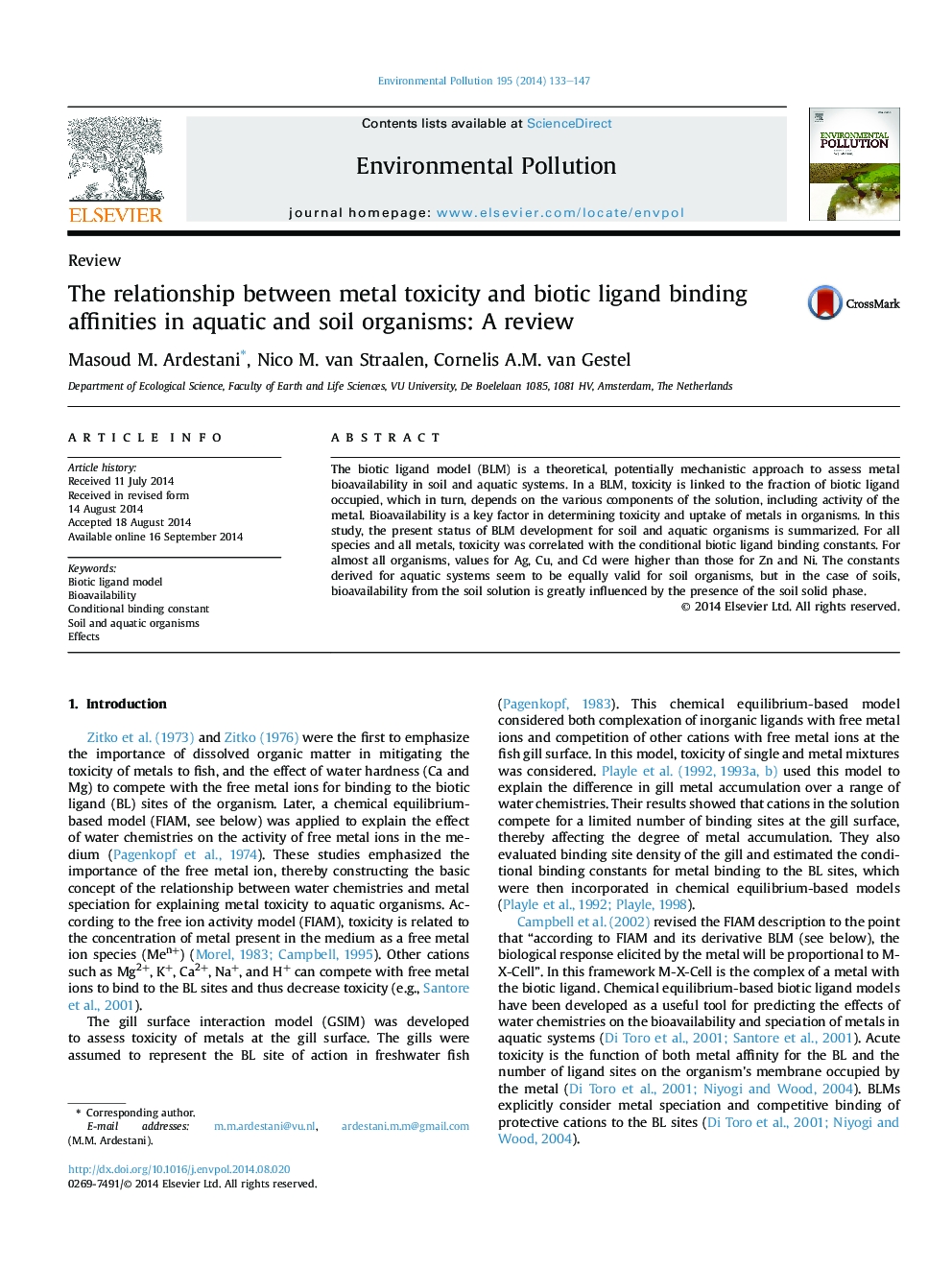| Article ID | Journal | Published Year | Pages | File Type |
|---|---|---|---|---|
| 4424390 | Environmental Pollution | 2014 | 15 Pages |
•Literature on Biotic ligand modelling in aquatic and soil organisms was reviewed.•Toxicity and metal uptake studies did yield almost similar BLM parameters.•Metal toxicity negatively correlated with conditional binding constant (K) values.
The biotic ligand model (BLM) is a theoretical, potentially mechanistic approach to assess metal bioavailability in soil and aquatic systems. In a BLM, toxicity is linked to the fraction of biotic ligand occupied, which in turn, depends on the various components of the solution, including activity of the metal. Bioavailability is a key factor in determining toxicity and uptake of metals in organisms. In this study, the present status of BLM development for soil and aquatic organisms is summarized. For all species and all metals, toxicity was correlated with the conditional biotic ligand binding constants. For almost all organisms, values for Ag, Cu, and Cd were higher than those for Zn and Ni. The constants derived for aquatic systems seem to be equally valid for soil organisms, but in the case of soils, bioavailability from the soil solution is greatly influenced by the presence of the soil solid phase.
